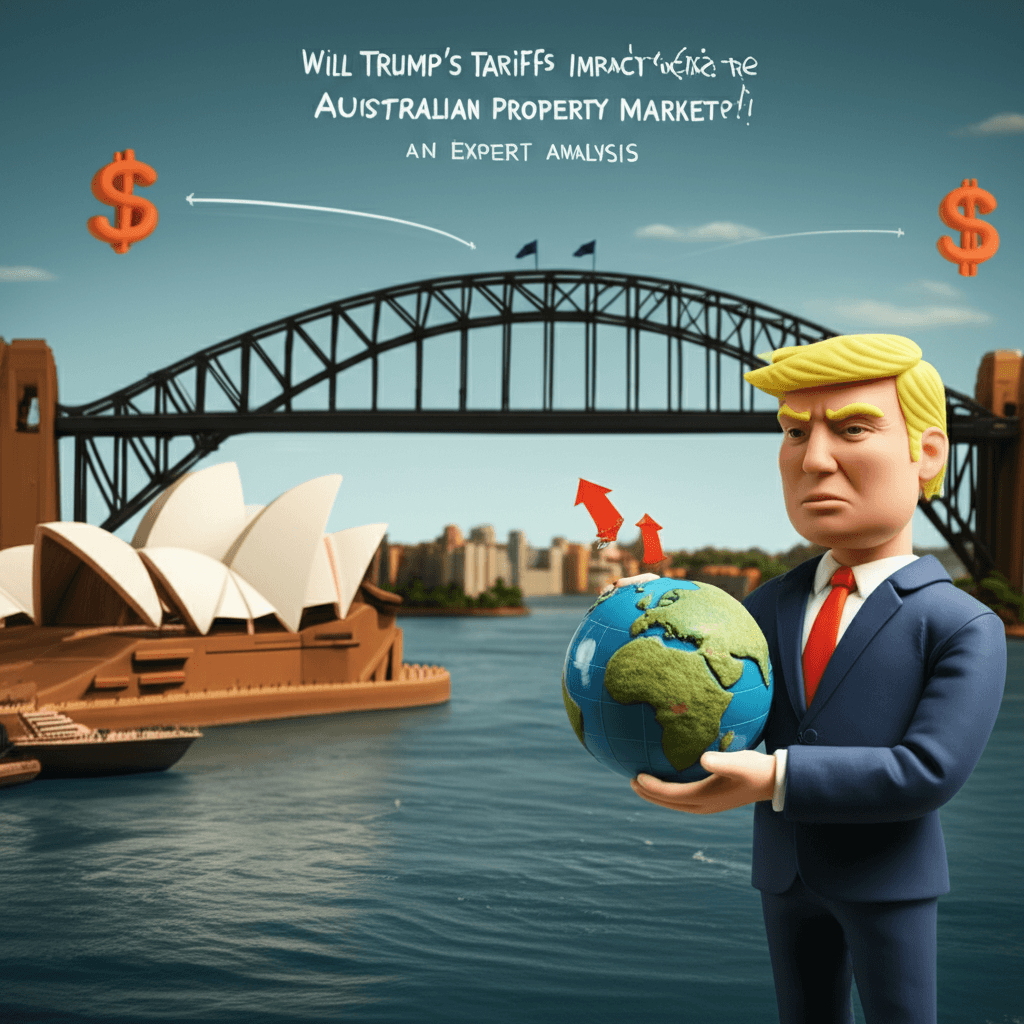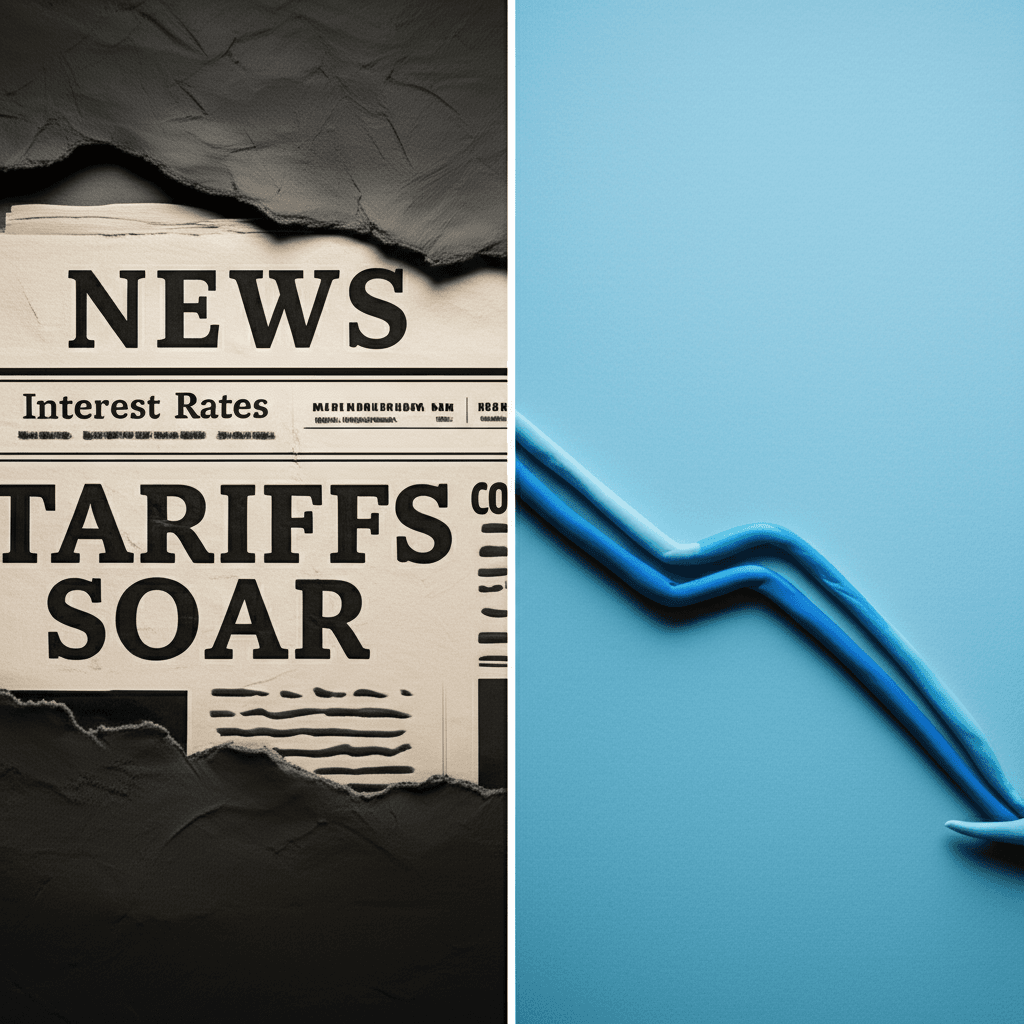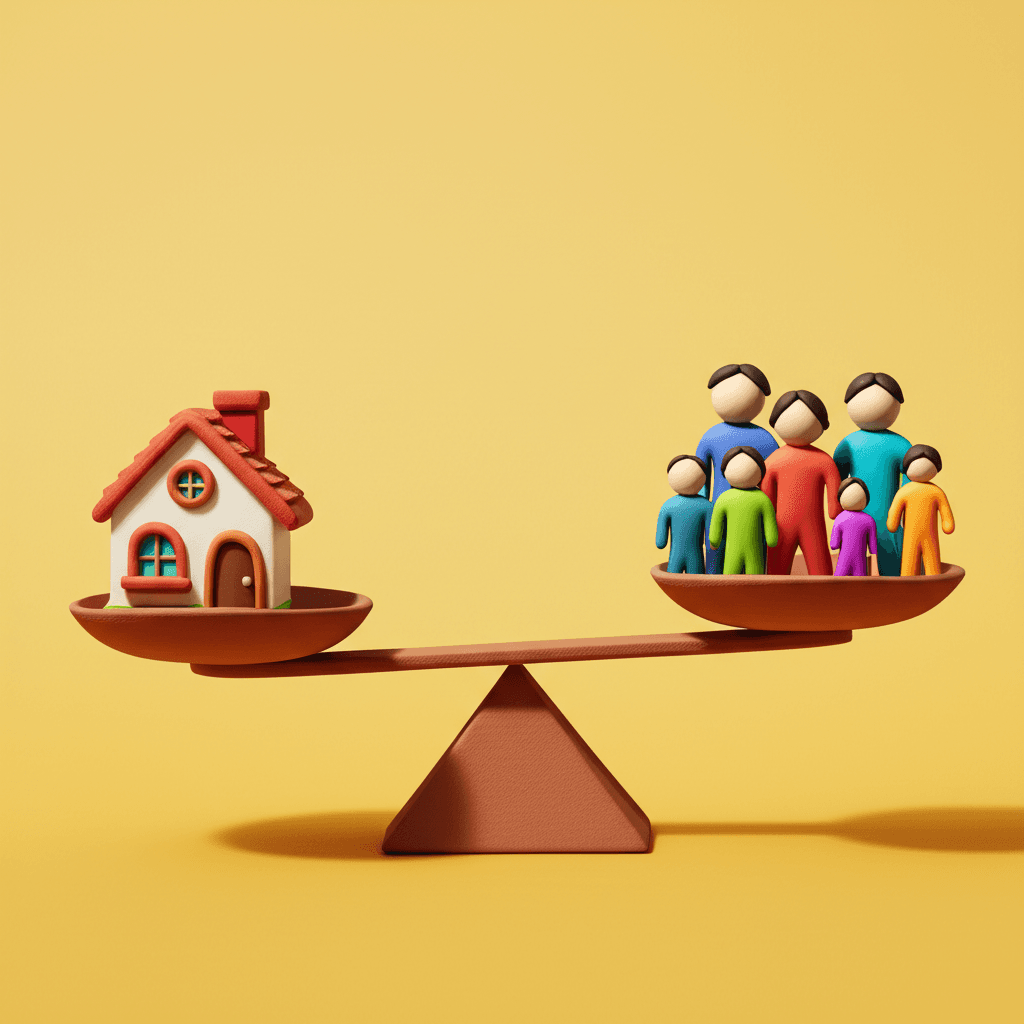Will Trump's Tariffs Impact the Australian Property Market? An Expert Analysis
Discover why global trade tensions could lead to interest rate cuts and unexpectedly fuel Australia's next property upswing.

Introduction
Recent headlines about potential US tariffs have sparked significant uncertainty and fear among Australian property owners and investors. With sensationalist news causing market jitters and clients questioning their next move, it's easy to get swept up in the panic. However, a deeper analysis reveals that the real story for the Australian property market isn't about international trade wars, but about domestic monetary policy and its powerful effect on property values.
Separating Market Fear from Economic Reality
While proposed tariffs create global economic ripples, their direct impact on Australia's property market is often misconstrued. The immediate effect is typically a surge in market uncertainty, driven by sentiment rather than fundamental shifts. History shows us that during times of economic disruption, central banks often respond with specific policy levers to stimulate the economy. This historical precedent is crucial for understanding what's likely to happen next.
Instead of focusing on the fear, savvy investors look at the probable reaction. The current speculation isn't just noise; it’s a strong indicator that the Reserve Bank of Australia (RBA) may act to safeguard the economy. For property owners, this points towards one key outcome: changes to the official cash rate. Understanding these potential shifts is the first step in making data-driven decisions, a core principle we champion at our Real Estate Analytics Hub.

A Lesson from the Past: The COVID-19 Property Boom
To understand the future, we can look to the recent past. The economic uncertainty at the beginning of the COVID-19 pandemic created widespread panic. Many predicted a market crash. Yet, the opposite happened. The RBA aggressively cut interest rates to historic lows to stimulate the economy. This drastic reduction in the cost of money, combined with government stimulus, ignited one of the most significant property booms in Australian history, with prices soaring between 30% and 55% in various markets.
This scenario provides a clear blueprint. When the cost of borrowing falls, buyer capacity increases, and demand surges. The current tariff situation, while different from a pandemic, is triggering a similar economic response. Major banks like ANZ are already forecasting aggressive rate cuts—some predicting a 50 basis point drop in a single meeting. This isn't just a minor adjustment; it's a significant catalyst for market activity.
How Rate Cuts Directly Fuel Property Prices
Lower interest rates have a direct and powerful impact on the property market. Firstly, they increase borrowing capacity. With forecasts of up to four rate cuts this year, a potential 1% drop in the cash rate could boost serviceability for the average borrower by 15-20%. On a million-dollar loan, that's an extra $150,000 to $200,000 in purchasing power injected directly into the market.
Secondly, this increased capacity fuels buyer demand. As more people can afford to borrow more, competition for a limited supply of properties intensifies. Australia is already grappling with a national housing shortage, a structural issue where we simply can't build homes fast enough to meet population growth. When you overlay increased borrowing power onto a market with a fundamental supply-demand imbalance, the result is upward pressure on prices. Our AI Buyer's Agent can help you understand how these changes to your borrowing power can open up new opportunities.

Market Predictions: Which Cities and Assets Will Benefit?
Not all markets will react uniformly. History suggests that during periods of falling interest rates, the more affluent, blue-chip suburbs in major cities are the first to experience strong growth. These aspirational markets often lead the charge before a ripple effect flows through to middle-ring and outer suburbs.
Based on current fundamentals, two capital cities stand out for potential double-digit growth over the next 12-18 months: Melbourne and Perth. Melbourne is showing strong signs of recovery and benefits from high interstate and overseas migration, combined with relative affordability compared to other major cities. Perth continues to be driven by strong population growth and economic fundamentals. You can find properties tailored to your lifestyle in these growing markets using our advanced AI Property Search.
In the medium term (2-3 years), if tariffs lead to lower costs for imported building materials, we could see construction costs stabilise or even fall. This would make building new homes more viable, potentially sparking a run on the land and apartment markets as the price gap between established and new properties widens.
Conclusion
While global headlines about tariffs create compelling drama, the real story for the Australian property market lies closer to home. The most probable outcome of this global uncertainty is a series of domestic interest rate cuts designed to stimulate the economy. As we saw during the COVID-19 period, lower borrowing costs combined with a chronic housing shortage is a powerful recipe for property price growth. Rather than sinking the market, these economic shifts are poised to create significant tailwinds, particularly for established properties in Melbourne and Perth.
Ready to cut through the noise and make informed property decisions? Leverage the power of data by exploring the HouseSeeker Real Estate Analytics Hub to uncover market trends and identify your next opportunity.
Frequently Asked Questions
So, are potential US tariffs actually good for the Australian property market?
Indirectly, they could be. While the tariffs themselves are not beneficial, the likely response from the Reserve Bank of Australia—cutting interest rates to stimulate the economy—is a major positive catalyst for property prices. Lower rates increase borrowing capacity and fuel buyer demand.
Which Australian cities are predicted to see the most growth?
Based on strong fundamentals like high migration, relative affordability, and existing market momentum, Melbourne and Perth are forecast to be the strongest performers. Both cities are tipped for potential double-digit growth as lower interest rates take effect.
Should I wait for interest rates to drop before buying property?
Waiting can be risky. The market often moves on sentiment before official announcements. As soon as rate cuts become highly anticipated, buyer competition tends to increase, which can drive prices up. The period of uncertainty before rate cuts are confirmed can often present the best buying opportunities for savvy investors who understand the underlying data.
